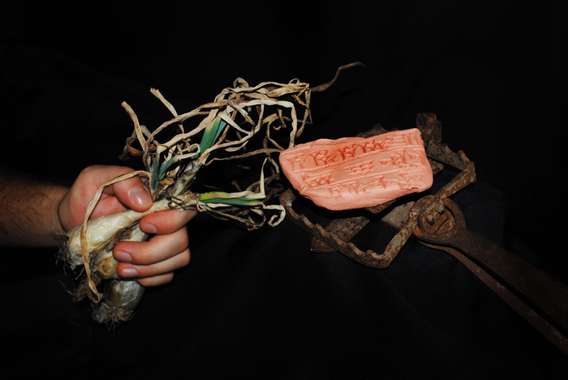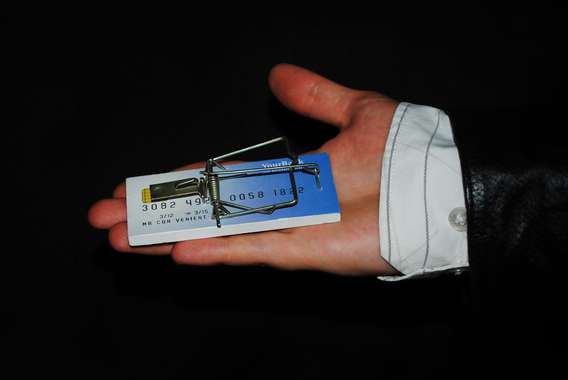Debt is a Trap
This work has not been commented by curators.
Title
Debt is a Trap
Headline
Representing the five historical eras discussed in David Graeber's article, with the theme of debt as a trap.
Concept author(s)
Sophie Garratt
Concept author year(s) of birth
1992
Concept author(s) contribution
Designer, Photographer
Concept author(s) Country
Australia
Friendly Competition
Competition category
Visual communication practice
Competition subcategory
static
Competition field
academic
Competition subfield
student
Subfield description
Griffith University
Check out the Debt. 2012 outlines of Memefest Friendly competition.
Description of idea
Describe your idea and concept of your work in relation to the festival outlines:
My concept was to visually represent debt during the five historical eras discussed in David Graeber’s article “Debt: The First 5,000 Years”. These eras are the Age of the Agrarian Empires (3500 – 800 BCE), the Axial Age (800 BCE – 600 CE), the Middle Ages (600 CE – 1500 CE), the Age of European Empires (1500 – 1971) and the Current era (1971 onwards). I have created one image for each era, representing the main points discussed in the essay. These images are a visual aid to accompany Graeber’s article and act as an educational tool to assists students in reading and studying the text.
Debt often seems to be a repercussion of convenience, whether it be farmers repaying their credits at harvest time, or in more current times, being able to buy anything and everything using a credit card. Using money which we don’t, and may never actually have, seems to have always been a way of life. However living by this ‘convenience’ has always had severe consequences for those involved, in the form of imprisonment, mass slavery and bankruptcy, just to name a few. As Graeber argues in the text, debt is founded on the logic of violence, resulting in the wealth and success of the creditors. However the debtors are left with an incredible burden, enslaved to those whom money is owed. My images are based around the notion of debt as a trap; it benefits few and disempowers many.
What kind of communication approach do you use?
Using digital photography, I have summarised each of the eras discussed, and visually represented the main points in each image. These include the current form of currency, how debt was recorded, who controlled debt and the effects of debt to society at the time.
What are in your opinion concrete benefits to the society because of your communication?
These images will be highly beneficial to students and other readers of the Graeber essay, as the images will help reduce study time as they quickly and simply summarise the main points discussed in the article. The consistent theme of traps throughout the photographs relates to Graeber’s ideas of the links between debt and violence. The traps also represent the severe consequences of being unable to repay debts, which can be seen all throughout history. The traps therefore also serve as a warning to readers of these dire effects.
What did you personally learn from creating your submitted work?
Majority of my research went into understanding symbolism and historical tools and artefacts relating to debt, such as Tally sticks and ancient Chinese paper money from the Middle Ages, Cuneiform tablets and Cuneiform writing from the Age of Agrarian Empires and religious symbols. This allowed me to effectively simplify the large amounts of text into a single image. This research also allowed the images to look authentic, tangible and reputable to their audience.
Why is your work, GOOD communication WORK?
My work is good communication work as it communicates with images, something that otherwise was only communicated in word form, therefore making it more accessible and understandable. The images also provide extra information that isn’t mentioned in the text, such as what ancient debt recording devices and currencies may have looked like. The photographs act as a quick, simple reminder of the essay’s main points, assisting in the reader’s study. They also use a consistent style, colour palette and theme of traps to link them together, allowing them to look like a part of a set. The style of the photographs adds a dramatic touch to the information, adding an emotional quality, rather than just the intellectuality of the article.
Where and how do you intent do implement your work?
The photographs are designed as a visual aid to accompany the five historical eras described in Graeber’s essay. These photographs can be used as an educational tool for future students reading the essay. These images not only serve as a break from the monotony of continuous text, but also assist students in study as a quick refresher of the essay’s main arguments. They could also, for example, be included in a study guide for students to test their knowledge of the history of debt by matching the photographs to the appropriate era.
The photographs are to be presented with the article in digital format, allowing them to be more environmentally friendly. It is at the discretion of students, teachers and other reader’s as to whether the photographs are to be printed for their specific needs.
Did your intervention had an effect on other Media. If yes, describe the effect? (Has other media reported on it- how? Were you able to change other media with your work- how?)
No.










